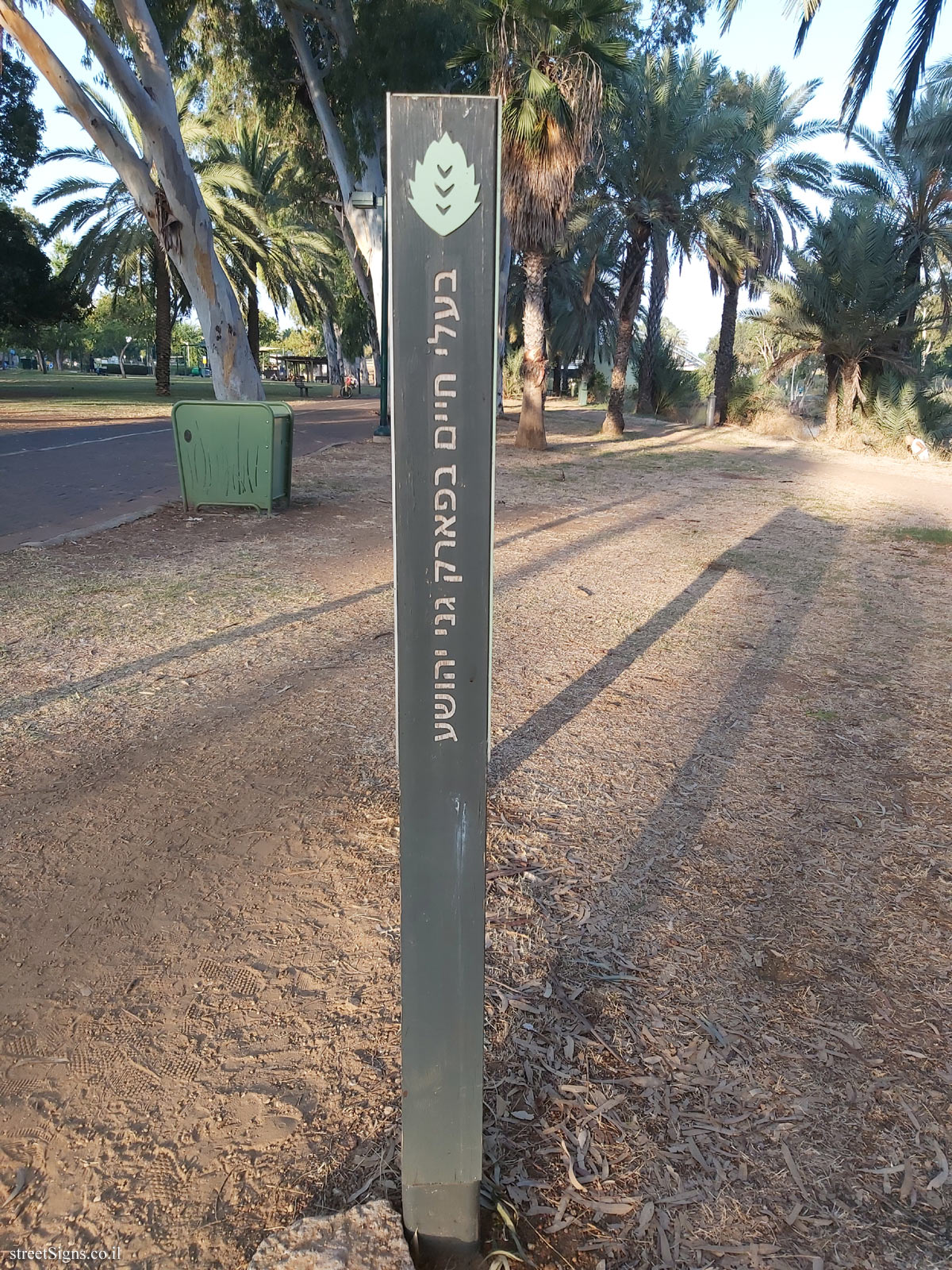A sign from the series of signs scattered along the Yarkon Park and describing the flora and fauna in the park.
On the pillar on which the sign stands is engraved the title of the sign: Animals in Ganei Yehoshua Park
 Click for a larger image Translation of the text on the sign
Click for a larger image Translation of the text on the sign:
Animals in Ganei Yehoshua Park Branding symbol of the city of Tel Aviv-Yafo
Emblem of the Ganei Yehoshua company
Emblem of the Yarkon River Authority
Within the boundaries of Hayarkon Park, a variety of habitats: the banks of a perennial stream, water lakes, hamra lands and protected areas.
Water birds:
In the vicinity of the stream and in the park area, waterfowl such as
mallard (1),
eurasian coot (2) and
common moorhen (3) can be observed nesting on the river banks.
The great cormorant (4) appears in winter in migratory flocks and exploits the eucalyptus trees on the banks of the creek as lodging sites.
White-breasted Kingfisher (5) and
common kingfisher (6), that their bright color shines in the distance, the first stays throughout the year while the second comes to visit only in winter.
The pied kingfisher (7) was observed standing in the air, fluttering its wings, re-diving in several attempts to catch a fish in the water.
Reptiles and fish In the waters of the Yarkon and its banks, there is a variety of amphibians, invertebrates, fish and reptiles. Among the reptiles can be seen the
Balkan pond turtle (8) that between its fingers are swimming membranes that help it in its swimming. Another species of tortoise is
the African softshell turtle (9) which can grow up to a meter in size. The
The European eel (10) migrates to the waters of the creek from the depths of the Atlantic Ocean.
Mosquitofish (11) is a carnivorous fish that destroys mosquito larvae. The most common fish is the
African sharptooth catfish(12) which has sensitive barbels with which it finds its food.
Yarkon bream (13), a fish that lives in coastal streams and in recent years a project has been carried out to save the species and return it to the Yarkon, after it has almost disappeared from the stream.
Mammals:
There are also various mammals around the creek.
Egyptian mongoose (14) is a small and agile carnivorous mammal, which lives in the thicket of bank vegetation, as well as the
southern white-breasted hedgehog (15).
Golden jackal (16) uses the vegetation of the banks as a hiding place and goes out in the evening to look for food. Increasing the amount of garbage has caused the jackal population in the park to increase excessively (erupting species).
Invasive species:
The park also has invasive species that originate from tropical countries, such as the
vinous-breasted starling (17) who manages to repel the
Syrian woodpecker (18) from his nest.
Common myna (19) and
rose-ringed parakeet (20) are also invasive species, originating in East Asia and today they repel native bird species. The
coypu (21) is a mammal that was imported from South America for its fur and today harms rare plant species.
Efforts are currently being made in the park to rehabilitate the habitats typical of the river, using local plant species that attract a variety of local life.
How can we help preserve the local species diversity? Reducing the volume of garbage thrown in the trash by reducing the use of disposable utensils, taking the garbage at the end of the fun in the park and preventing feeding the animal species.
These simple actions will prevent excessive multiplication of invasive and eruptive species that feed on garbage and harm the local animal population.
Illustration: Tuvia Kurtz, ecological advice: Liav Shalem

 Click for a larger image
Click for a larger image